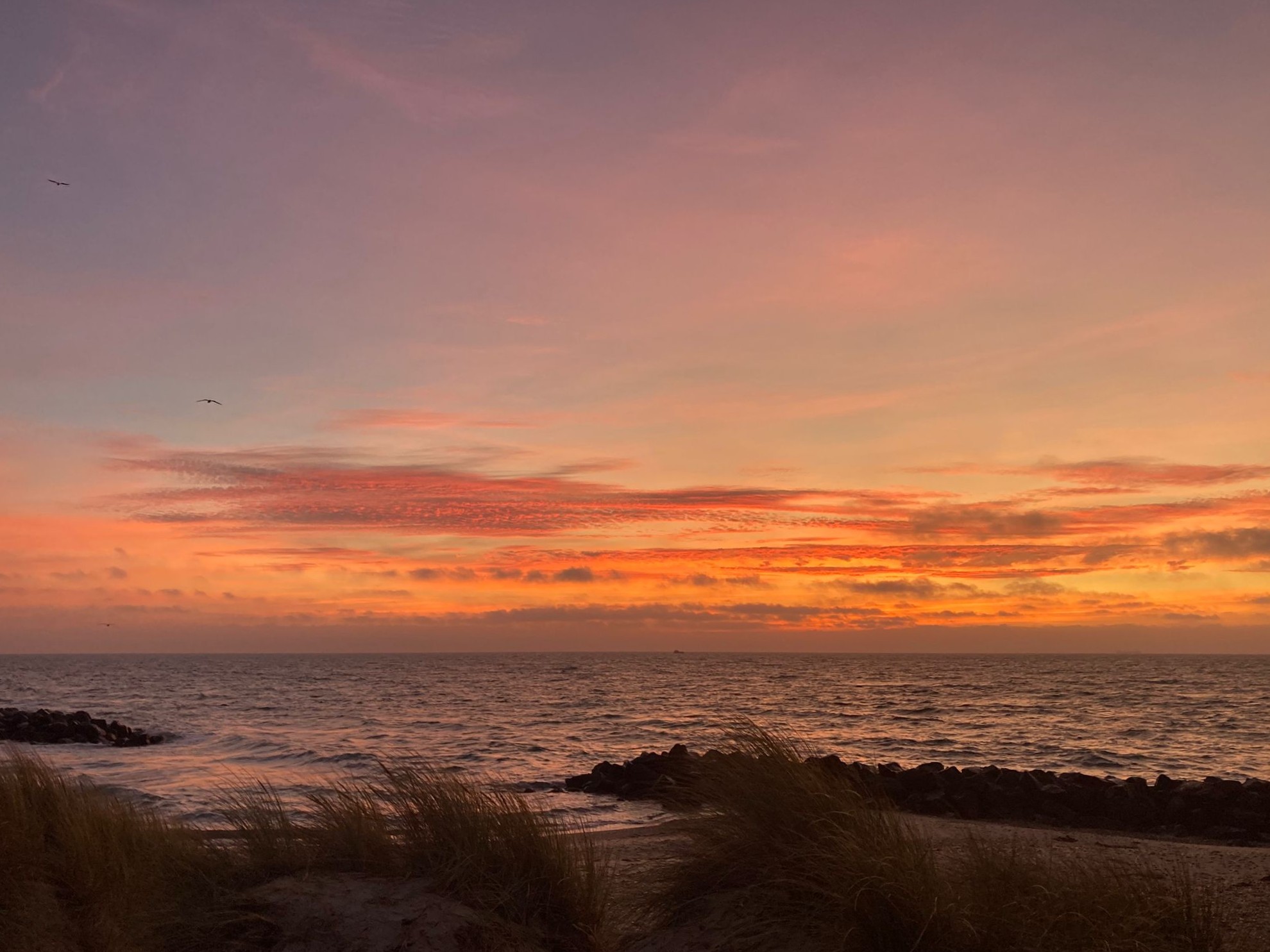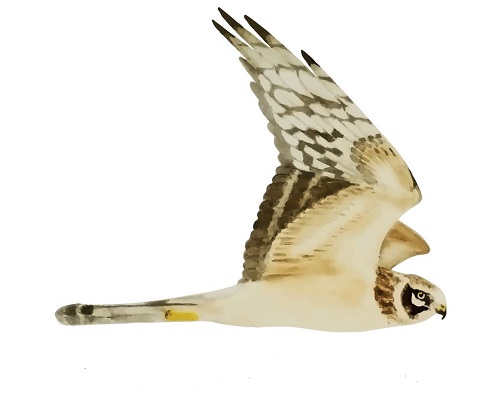Her på Skagen Fuglestations blog bringes korte nyheder i dagbogsformat om hændelser på fuglestationen.
Rarity days go on
I went once again out for observing at World’s End III. The first hour already brought us a Black-throated Diver (Sortstrubet Lom), which we hadn't seen so often in the last weeks. It was also a good species for Anton, one he doesn't see very often. Afterwards, we sadly had to say goodbye to him as his "Praktik" week from school had already come to an end. But with seven lifers during the last days, it can't have been such a bad time!
Beautiful sunrise
Later that morning, we received a Zello message from Alex, who was sitting at Nordstrand. A Great Northern Diver (Islom) was on its way to us! Barely a minute later, it appeared at our location and migrated southeast not too far away. Shortly afterwards, a suspiciously large pipit (piber) was reported, also from Nordstrand, also flying in our direction. I got ready with my audio recorder and camera, but the bird just didn't want to show up. Instead, a flock of Water Pipits (Bjergpiber) made a migration attempt, which was also nice to see. Furthermore, a late House Martin (Bysvale) showed up and some Shore Larks (Bjerglærke) were resting on the beach.
There were also some birds at the ringing with a nice flock of Blue Tits (Blåmejse) and surprisingly many Blackcaps (Munk) for this time of the year. János was able to see Bearded Reedlings (Skægmejse) in hand for the first time, so this was exciting.
Simon had a guided tour today for Norwegian high school teachers, so they also came to visit the ringers but also the observers afterwards. I was spontaneously asked to give them a short presentation on the equipment we use during migration count, which was unexpected but fun.
After four hours of counting, I stayed outside, as there were some Yellowhammers (Gulspurv) and Reed Buntings (Rørspurv) present, which always gives hope for rarer buntings. There seems to be a big influx of Black-faced Buntings (Gråhovedet Værling) going on in Europe, which will hopefully also reach Skagen! And indeed, a rare bird suddenly appeared. It wasn't a bunting, but a large pipit flying over me, calling luckily.
Large pipit alert!
It sounded like a Richard’s pipit (Storpiber), but at this time of year I wanted to check again later on the sound recording to see if it was not a Blyth’s pipit (Mongolsk Piber). It must have been the bird from Nordstrand, which had probably stopped somewhere to rest in the meantime. In the evening when checking the recording, it turned out that it was a Richard’s pipit (Storpiber), the first one for Skagen this year, and a very late one too!
Some more news about rarities: Unfortunately, it turned out that our potential Eastern Yellow Wagtail (Sibirisk Vipstjert) from the 29th of October cannot be assigned to a population east of Taimyr region for sure. Either the quality of the recording is too bad, or the bird comes from the region, where Yellow Wagtails seem to carry mixed genes of Eastern and Western. It's a bit sad that the bird cannot be confirmed, but thanks to Alex Hellquist's analysis, it's still exciting to know that it was a bird of an eastern origin! Perhaps simply not far enough from the East. We will never know. The bird had migrated out to the sea, so couldn’t be found again in the days after the sighting.
Ringing (Kabeltromlen):
Vindrossel 1
Solsort 1
Musvit 1
Gærdesmutte 3
Rødhals 1
Skægmejse 1
Grønsisken 1
Stillits 1
Blåmejse 17
Munk 5
Fuglekonge 1
Total - 33
Richard's Pipit (Storpiber) 1
Link to today’s observations from the area
People: Mara Glane, Florian Hatt, Amira Nuseibeh, Miles Scheuering, Lise Mastrup, Anton Møbjerg Toft, Simon S. Christiansen, János Schadl and our guest Jørgen Hulbæk



